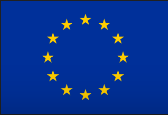RESCUE: Improving the resilience of critical infraestructure


| Fechas | September 2025 – August 2028 |
| Web del proyecto | www.rescueproject.eu |
| Líder | RISE Research Institutes of Sweden AB |
| Entidad financiadora | Rescue project has received funding from the European Union´s Horizon Europe research and innovation programme under grant agreement n.º 101225910.
|
| Logo del proyecto | Available soon |
Descripción
The RESCUE project aims to strengthen infrastructure that is key to society, such as energy distribution and smart, resilient cities, in line with the Critical Infrastructure Resilience Directive.
To this end, one of the key technologies in RESCUE will be used: edge computing, which allows information to be processed directly where it is generated, without relying on a central hub. Thanks to this, sectors such as energy and communications can operate more autonomously, reducing the risk of disruptions that could affect other critical services, such as healthcare or banking, thus helping to mitigate cascading failures.
Objectives
- Enhance the ability to identify risks and faulty events in critical infrastructures in real time.
- Develop technologies for secure and resilient connections, enabling continuous monitoring and control.
- Ensure interoperability between critical systems and coordination and response bodies.
- Improve the adaptability and cyber-resilience of critical infrastructure networks and systems.
Rol de Cuerva
In this project, Cuerva will lead the development of edge computing technology in several transformer substations equipped with edge nodes, capable of acquiring and processing energy information in real time.
Edge computing technology will facilitate decision-making, ensuring efficient energy distribution thanks to the implementation of a blockchain-based P2P energy market. Cuerva will carry out flexibility experiments in a regulatory sandbox environment.
The specific objectives of the project in Cuerva’s network
- Real-time monitoring of Cuerva’s network in transformer substations with flexible connections from the Sandbox.
- Integration of a low-latency timing technology in transformers to enable data transmission and synchronization with minimal time latency.
- Exploration of flexible capacity transactions, once granted, through a secondary capacity market.
- Validation of compliance with requirements and transaction effectiveness using blockchain technology.
Upon completion of the project, Cuerva will have an integrated hardware and software solution to monitor and control its low-voltage networks, improving both network efficiency and resilience and optimising the response to potential failures.

.webp)

.webp)
